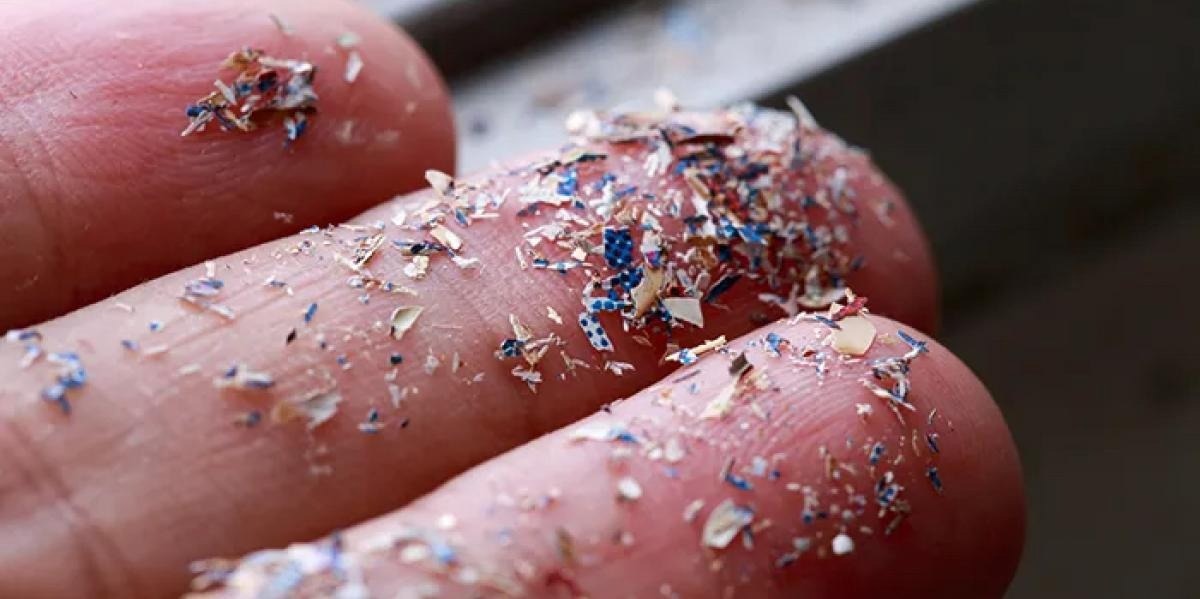A team of worldwide researchers is encouraging the international community to recognize the full environmental and health dangers posed by plastics and designate them as persistent, bio-accumulative, and toxic (PBT) pollutants.

Larger pieces of plastic break down in the oceans. Image Credit: University of British Columbia
The researchers say in a new Viewpoint published in Environmental Science and Technology that categorizing plastics, especially micro- and nano-sized particles, as PBT pollutants would provide governments with the tools they need to effectively manage plastic production, usage, and recycling.
We need to wake up the world and understand the risks of these pollutants.
Dr. Juan José Alava, Study Lead Author and Ocean Researcher, University of British Columbia
The study included investigators from Canada, Europe, the United States, South America, and Asia.
The appeal comes ahead of the United Nations’ Intergovernmental Negotiating Committee on Plastic Pollution’s efforts to establish an international legally binding treaty to tackle plastic pollution.
We live in the age of plastic—the Plasticene. There’s plastic everywhere. It is in the ocean, coastal zones, and terrestrial environment. It has been found in animals across the globe, human tissues and organs, and deep in the Mariana Trench—the deepest part of our ocean. They don’t degrade easily, so they last for many, many years.
Dr. Juan José Alava, Study Lead Author and Ocean Researcher, University of British Columbia
Dr. Alava is also the Principal Investigator of the Ocean Pollution Research Unit at UBC’s Institute for the Oceans and Fisheries.
Plastics’ popularity, durability, and efficiency also make them a hazard; with high durability, long half-lives, and low disintegration rates, plastics can take up to 2,500 years to biodegrade or break down.
Examples include single-use polyethylene terephthalate (PET) water bottles and high-density polyethylene (HDPE) plastic bottles. Plastic's worldwide ecological imprint is changing natural processes and negatively harming the oceans if nothing is done.
Plastics are susceptible to accumulation in all organisms, with aquatic animals being the most vulnerable to micro- and nano-sized particle exposure. These particles are toxic to marine animals because they can alter gene and protein expression, cause inflammatory responses, impair brain development, and reduce growth and reproduction rates, all while interfering with healthy feeding and foraging behaviors.
It’s hugely important to remember that it's not just plastics. Many plastic products contain chemicals that in themselves are known to be persistent, bioaccumulate, and toxic.
Dr. Gunilla Öberg, Study Co-Author, Institute for Resources, Environment and Sustainability, University of British Columbia
These plastics, which contain additional toxins, have the potential to operate as a “Trojan Horse” in the ocean.
“Organisms often ingest these plastics by mistake, and thus, become carriers of many other chemicals and microorganisms,” says Dr Gabriela V. Aguirre-Martínez, co-author from the Universidad Arturo Prat in Chile.
Sometimes humans consume these particles through the food they eat. The potential health implications are still being investigated, but the ability of plastics to accumulate in human tissues and organs poses a worry, particularly to people of coastal communities that rely largely on seafood.
Dr. Alava notes, “Plastic particles have been found in the human placenta, in breast milk, lungs and in the colon. So, the exposure is real. Canada has already banned six types of single-use plastics, but other harmful plastics like PET water plastic bottles need to be eliminated. We need an international effort to really eliminate harmful plastics from the world.”
“This call ahead of the next round of negotiations of the international legally binding instrument for plastic pollution by the United Nations Environment Programme is critical because access is so restricted that very few from civil society or scientists can be present to highlight that this aspect has not yet been given the necessary attention,” adds Dr Melanie Bergmann, co-author from the Alfred Wegener Institute Helmholtz Centre for Polar and Marine Research.
Dr. Alava believes that one day the ecological footprint will reflect that humans have moved away from plastics and toward more biodegradable replacements and green, environmentally friendly materials.
Dr. Alava concludes, “We should really think about ways we can be ocean leaders, and really have future generations change their perspective on, and consumption of, plastics.”
Journal Reference
Alava, J. J., et al. (2023). A Call to Include Plastics in the Global Environment in the Class of Persistent, Bioaccumulative, and Toxic (PBT) Pollutants. Environmental Science and Technology. doi.org/10.1021/acs.est.3c02476.